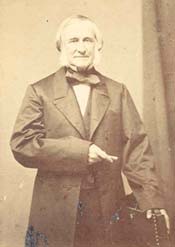The Boston Bar in the 1880s and 1890s

According to the census of 1890, there were 2,589 attorneys in Massachusetts.[1] A small percentage were minority lawyers and only a handful were women. The restriction on women practicing as lawyers had been removed a few years earlier by Chapter 139 of the Massachusetts Statutes of 1882. The Bench and Bar in Massachusetts were still dominated by the old Yankee families, but the rising generation of lawyers saw many African-American, Irish, Italian, and Jewish attorneys developing their practices and their own firms.
This was also the time of standardizing the profession through the emergence of law firms, education, and bar associations. Beginning in the 1870s several partnerships took on the appearance of the modern law firms. Many of the largest firms in Boston today-such as Ropes & Gray and Hale and Dorr-trace their descent from this period. During the same time over at the Harvard Law School, Christopher Columbus Langdell was using the Case Study Method to train future attorneys. Boston University had also recently founded a law school, with the encouragement of much of the Bar as a practical alternative to Langdell's innovations across the Charles River. The Boston Bar revived itself after a few decades of informality with the creation of the modern Boston Bar Association in 1876 with Sydney Bartlett as the first president.
The courts were changing as well during the period. The Superior Court was given original jurisdiction over capital crimes in 1891. This came just before one of the most famous murder cases in Massachusetts history, the Lizzie Borden Murder trial, which took place in 1893. The new Land Court was created in 1898. Among the types of litigation that were on the rise were personal injury cases associated with injuries sustained in unsafe working conditions.
Footnotes
[1] ROBERT GRANT, BENCH AND BAR IN MASSACHUSETTS 1889-1929, reprinted from 5 THE COMMONWEALTH HISTORY OF MASSACHUSETTS, 101 (1930).